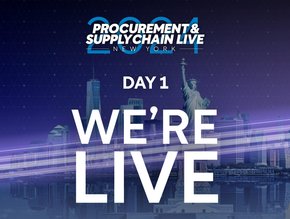Procurement talent 'must be retained not acquired'

Fighting for increased software budgets can sometimes feel like driving down a dead-end street.
Decision makers aren’t always the most tech-savvy group, and they may not see value in the same things procurement or IT leaders do.
In addition to the age-old argument of, “We’ve always done things this way, why change now?”, it’s also not common for these decision-makers to be swayed or excited by the shiny new SaaS product being buzzed about in their organisation’s industry.
If a proposal can’t demonstrate the tangible value that a new software will bring into the business, then forget about it.
But sourcing, procurement, and vendor management (SPVM) professionals know first-hand the value that the right tool can bring to an organisation.
Whether it’s immediate ROI or increased efficiency, finding or upgrading to the best solutions available — namely, contract lifecycle management (CLM) solutions — can be pivotal to organisational success.
The thing is, SPVM professionals need to know how to make the case for these solutions.
Expanding the budget for yet another software tool isn’t going to happen without strong evidence that the company will somehow profit from the purchase.
Those campaigning for new SaaS tools need arguments and data points that decision-makers will have no choice but to agree with.
And that brings us to one of the most compelling arguments right now: staff augmentation.
Staff augmentation definition and use cases
Let’s start at the beginning by breaking down the definition of 'staff augmentation'. It’s a term that sounds a bit more high-tech than it is.
According to an article from Toptal Research, staff augmentation is defined as “the use of outside personnel on a temporary basis to augment the capacity of your organisation.”
Basically, staff augmentation is a solution for onboarding new workers with the specific set of skills a company needs — but these workers are outsourced, which is done for a fraction of the cost of a traditional in-house hire.
Organisations have a variety of needs for staff augmentation, including:
- Outsourcing professionals with a particular or niche skill-set
- Strategic team-building with flexible labour to increase agility or speed-to-market
- Employing short-term/contract workers in the interim of hiring permanent teams
- Increasing capacity to meet productivity demands (often project-based)
“Staff augmentation is a powerful model that organisations can leverage to increase agility and respond to the changing needs of the enterprise,” says Toptal.
“It’s being used increasingly across industry borders. Staff augmentation solutions are being used increasingly for roles ranging from R&D to Operations, HR, Finance, and more.
When considered in light of moves from industry giants like Google — which acquired a freelance/contract network of data scientists called Kaggle in 2017 — the importance of augmented staff for enterprises, now and in the future, cannot be overstated.”
And given the true cost of bad hiring decisions, it makes total sense why organisations would utilise staff augmentation instead of interviewing, hiring, and onboarding internal employees.
Northwestern University reports that the U.S. Department of Labour has found the average cost of a bad hire to be at least 30% of the individual’s first-year expected earnings.
So if an employee with an annual income of US$60,000 ends up not working out, the cost to the organisation can be US$18,000, if not greater.
And that’s just one employee — think of the astronomical costs that accumulate over teams and time. That’s money (and wasted time) that no business wants to be spending.
So organisations have started looking at lower-risk ways to bring people on board, especially for short-term projects.
And staff augmentation, in the traditional sense, is no small industry.
In fact, Staffing Industry Analysts found back in 2019 that the staffing industry generated US$490bn of revenue worldwide.
Since the COVID-19 pandemic and the rise of global/remote workforces, this number has only gone up.
Of course, staff augmentation isn’t a one-size-fits-all solution.
Toptal warns that in particular, this is not a great solution for extended projects (for example, one that will take over two years to complete) or certain projects that “require a high level of contextual, institutional knowledge.”
Whenever someone fresh is brought into an organisation, there will always be some ramp-up time involved despite their education or industry experience. This is important to keep in mind when project planning and setting expectations.
Capitalising on the service function of SaaS tools
Another way to look at staff augmentation is through a SaaS lens.
When a software not only provides a useful tool, but the AI-driven 'manpower', or even that of human workers to support the user’s organisational needs, customers of that SaaS tool can often end up saving money by supplementing their own staff with the help of the software services they’re already paying for.
There are multiple ways that leveraging a SaaS solution for staff augmentation can help create significant breathing room in a software budget.
Two of the most common ways are:
- Minimising the number of employees who would need to be otherwise outsourced via contract or consultancy work (i.e. seasonal, project-based, or short-term help)
- Reducing existing internal headcount (i.e. inefficient, redundant, or part-time positions)
We’re now seeing organisations across dozens of sectors leaning on their SaaS solutions to help support their infrastructure and achieve various goals.
The list of industries who can benefit from SaaS-based staff augmentation includes:
- Finserv
- Fintech
- Healthcare
- Manufacturing
- Logistics
- Retail
- Insurance
- Professional Services
- And more
There is often a focus on IT staff when it comes to staff augmentation, but many roles, such as finance, data entry, business strategy, and program/project management roles can all be augmented with the right SaaS solution.
The list of job functions that can be effectively augmented is a mile long.
For instance, a CLM v.2.0 like Terzo offers our Contract Intelligence services to create commercial contract calendars; provide executive reporting re: suppliers that identifies suppliers’ contracts, spend, and risk; catalogues and organises everything in your active supplier contracts, and much more.
Cost savings opportunities with staff augmentation
As we touched on earlier, the cost of a bad hire can be quite significant. Not to mention the lost productivity, recruitment costs, dampened morale and potentially damaging employer reputation that an organisation can incur after too much turnover.
However, the financial risks tend to be the most impactful (immediately, anyway), and businesses have, as noted above, looked to staff augmentation to correct the course of things.
That being said, outsourcing temporary team members through third-party staffing companies or independent contractors can still come with a hefty price tag as compared to leveraging their existing SaaS tools.
Depending on how many people are needed, the cost of their pre-hire and onboarding, and how long they’re needed for, opting instead to go with the built-in team, an SaaS solution provides may be significantly less costly.
For example, the median salary of a Contracts Manager in the United States is US$128,350 as of September 2022.
Depending on the size of an organisation and the volume of third-party contracts they hold, they may have multiple Contracts Managers in-house. There’s also the cost of onboarding, benefits and vacation to take into account.
The value of a CLM which combines a software and a service would, in this case, likely be the most cost-effective option.
The price range of a CLM subscription is large, from below US$50,000 to over US$1mn (depending on many factors), however the average license fees are around US$300,000 a year.*
But that investment not only includes the software — it also includes the offered services of that SaaS company’s team at the customer’s disposal.
SaaS customers get the benefit of working with professionals who are already familiar with their organisation and - in terms of contract management strategy - are experts who can optimise contracts and supplier relations.
These are people who not only know their job well; they also know the customer’s business goals and objectives well.
And if an organisation is looking to perform a quick launch or work with a remote team that still feels easily accessible to communicate with on a day-to-day basis, staff augmentation beats traditional outsourcing every time.
Terzo: Your newest solution for staff augmentation
Terzo is one such solution for staff augmentation, empowering customers to cut overhead costs and optimise their supplier relationships even further.
From variable forecasting to contract processing to automated metadata entry and extraction, our powerful Contract Intelligence tool can fill the gaps in our customers’ workforces while also helping them identify cost savings opportunities within their contracts.
(You can learn more about Terzo’s Professional & Managed Services catalog by contacting us here.)
Once SPVM leaders become aware of the ins and outs of staff augmentation, they are better equipped to advocate for a larger software budget so that their teams and businesses can reach goals more easily than before.
It’s up to organisations to stay competitive and relevant with the technology that sets them apart from the competition and optimises their operations — and the saved time and money associated with staff augmentation is well-documented and acknowledged by business leaders worldwide.
It’s for this reason that SaaS solutions able to offer a human services component are such a value add to any organisation.
The ROI that the correct SaaS solution offers can sometimes be hard to articulate, but the added element of staff augmentation makes for a compelling argument that works in SPVM professionals’ favor.






